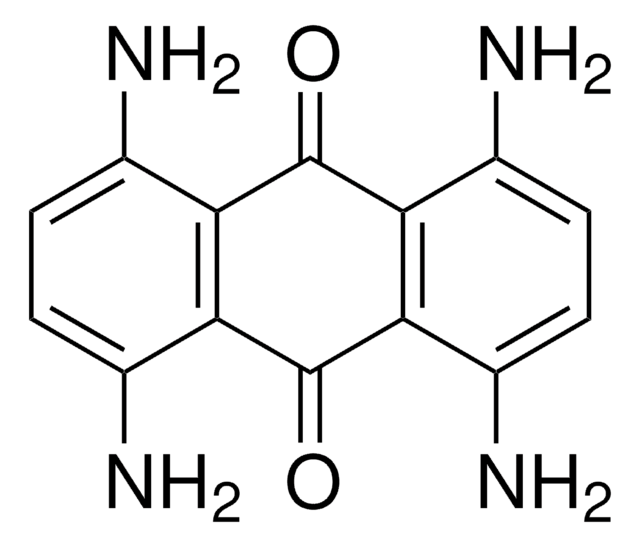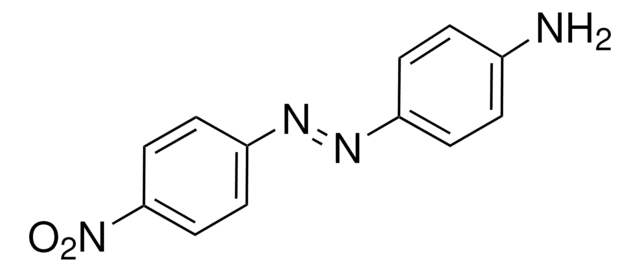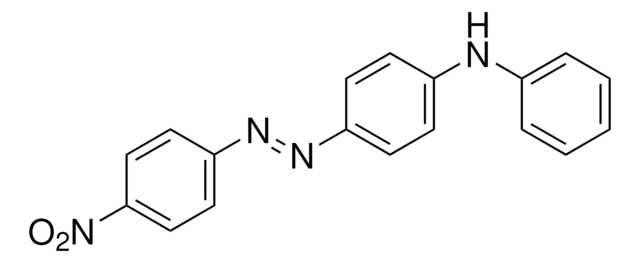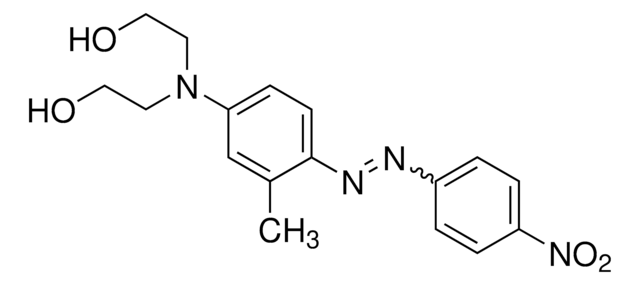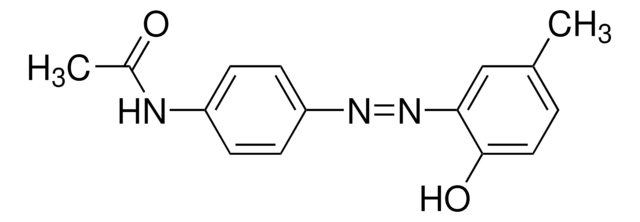21603
Disperse Orange 37
for microscopy
Sinónimos:
3-[4-(2,6-Dichloro-4-nitrophenylazo)-N-ethylanilino]propionitrile
About This Item
Productos recomendados
grado
for microscopy
Nivel de calidad
Formulario
powder
ε (coeficiente de extinción)
≥250 at 415-425 nm in methanol
idoneidad
suitable for microscopy
aplicaciones
diagnostic assay manufacturing
hematology
histology
temp. de almacenamiento
room temp
cadena SMILES
CCN(CCC#N)c1ccc(cc1)\N=N\c2c(Cl)cc(cc2Cl)[N+]([O-])=O
InChI
1S/C17H15Cl2N5O2/c1-2-23(9-3-8-20)13-6-4-12(5-7-13)21-22-17-15(18)10-14(24(25)26)11-16(17)19/h4-7,10-11H,2-3,9H2,1H3/b22-21+
Clave InChI
KHZRTXVUEZJYNE-QURGRASLSA-N
¿Está buscando productos similares? Visita Guía de comparación de productos
Descripción general
Aplicación
Otras notas
Palabra de señalización
Warning
Frases de peligro
Consejos de prudencia
Clasificaciones de peligro
Skin Sens. 1
Código de clase de almacenamiento
11 - Combustible Solids
Clase de riesgo para el agua (WGK)
WGK 3
Punto de inflamabilidad (°F)
Not applicable
Punto de inflamabilidad (°C)
Not applicable
Equipo de protección personal
dust mask type N95 (US), Eyeshields, Faceshields, Gloves
Elija entre una de las versiones más recientes:
Certificados de análisis (COA)
It looks like we've run into a problem, but you can still download Certificates of Analysis from our Documentos section.
Si necesita más asistencia, póngase en contacto con Atención al cliente
¿Ya tiene este producto?
Encuentre la documentación para los productos que ha comprado recientemente en la Biblioteca de documentos.
Nuestro equipo de científicos tiene experiencia en todas las áreas de investigación: Ciencias de la vida, Ciencia de los materiales, Síntesis química, Cromatografía, Analítica y muchas otras.
Póngase en contacto con el Servicio técnico